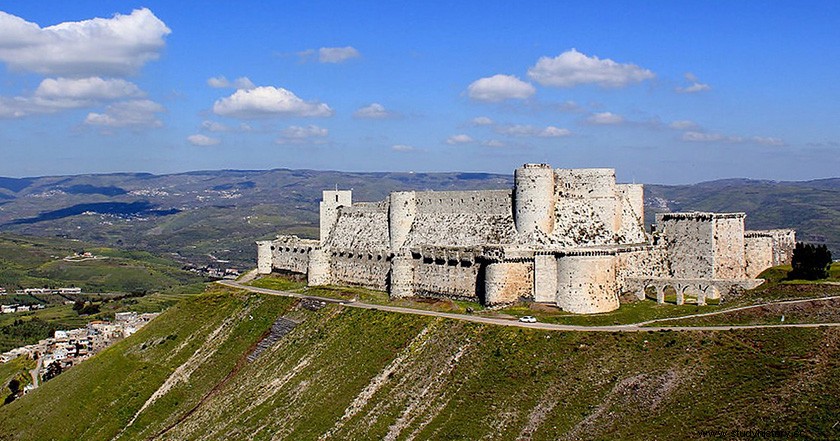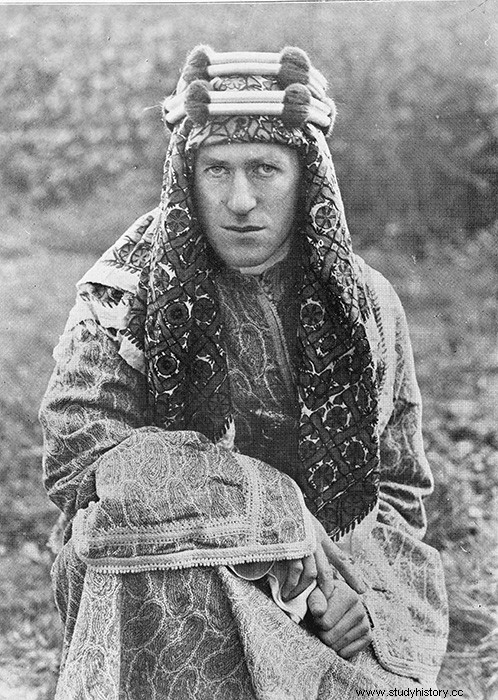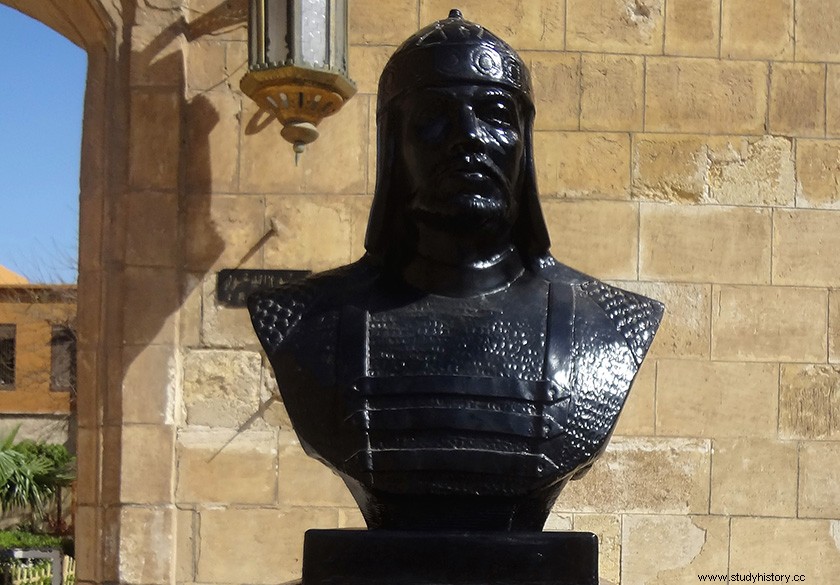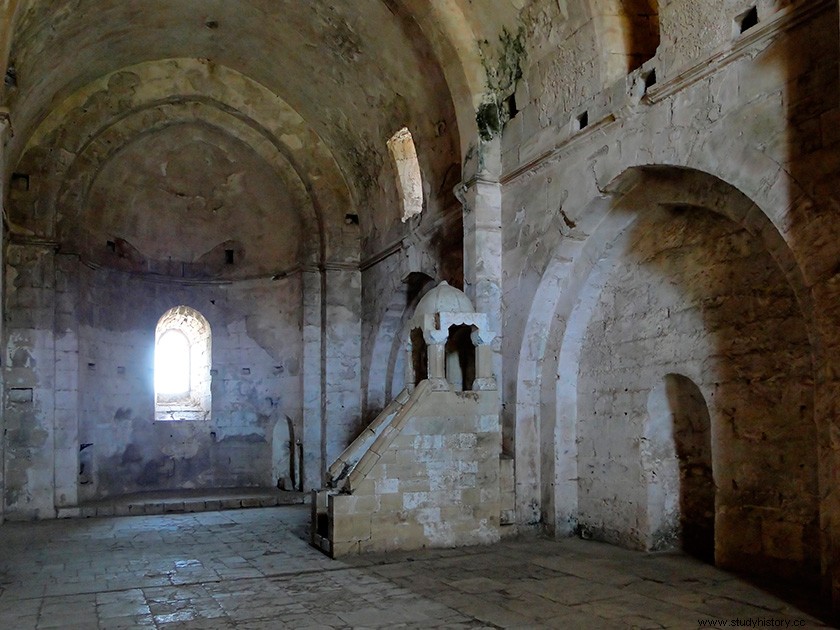
To which we can add more impregnable, or to At least that is what Thomas Edward Lawrance, the famous Lawrance of Arabia, thought one day in the summer of 1909, when he appeared in front of that enormous stone mass located in the mountains of southern present-day Syria.
Lawrance of Arabia.
British Army officer T. E. Lawrance, born in 1888 in the Welsh county of Caernarvonshire, is often credited with a childhood passion for castles. Because of this he enrolled in 1907 at Jesus College in Oxford to study his passion, history. Since he started his second year, he was clear about the path his career should follow, since he chose Military and Strategic History as his research project.
That same summer of 1908 he already undertook his task of gathering information for his doctoral thesis. This work consisted of cycling through the center and south of France, to prepare a detailed dossier on the medieval castles of the Gallic country. But it must not have been enough for him, so the following summer, following the advice of the director of the Ashmolean Museum in Oxford, he headed to the coast of what is now Lebanon, to study the castles that the Christian Crusaders had built in the area.

Lawrence of Arabia
Accompanied by his notebook, his pistol and his compass, he traveled the roads of the Middle East in search of at least 35 castles that appeared in his doctoral thesis. Entitled “the influence of the Crusades on European military architecture ” Evidently it was a badge of honor for our character, in addition to being currently one of the most important documents for the knowledge of the Crusader castles.
The beginning of El Crac de los Caballeros.
As it is known, in the year 1099 the Christian crusaders take the city of Jerusalem. A few years later, in 1110, Tancred de Hauteville took over the Muslim fortress called the Castle of the Kurds, which had been under construction since the emir of Aleppo had it built in 1031.
But the knights of the Hospitaller Order will have to arrive in 1142 after the cession of Count Raymond II of Tripoli, so that between that year and 1170 it ends up becoming the majestic Castle of the Crac de los Caballeros, found more than eight centuries later by the British adventurer, archaeologist and soldier T. E. Lawrance.
A story of sieges, with a final trap.
Up to a dozen sieges the Christian fortress had to resist in the face of repeated Muslim attempts to recover the square, the most famous of which came from the great Saladin. The first took place in 1180 and the second of them after the great Muslim victory in the Battle of Hattin (1187), a year later the siege continued without success, at most with the death of the master of the Order of the Hospital.
It took nearly a century for the Muslims to settle in the Crac de los Caballeros. Specifically, on March 3, 1271, the sultan of Egypt, Baybars, decided to seek a touch of prestige against his Muslim rivals, for which it was necessary to conquer the impregnable Christian castle. The siege lasted more than a month and despite having gathered the largest Muslim army to date, it was unsuccessful like the previous ones. They had only managed to break through the first defensive line, but the interior of the castle remained unperturbed, occupied by a few knights with the help of the brave peasants.
But something changed this time, at the beginning of April a carrier pigeon landed inside the main enclosure. The message was clear, the Hospitaller Knights had to leave the fortress, and agree with the enemy to surrender, in exchange for their own protection, to the Christian area around Acre. Said and done, the next day the hospitaller knights together with the rest of the inhabitants of the fortress left the Crac de los Caballeros, before the attentive gaze of the impassive Mamluks of Sultan Baibars.

The Mamluk Sultan Baibars
The famous note was signed by the Grand Master of the Hospitaller Order of Tripoli. It is evident that all eyes point to a deception on the part of the advisers of the Egyptian sultan, but it is an aspect that has not been proven. Although no one should rule out an exit through the front door, of some Christian knights abandoned to their fate, due to the pressure exerted by the Muslims in the few territories that the former still held in the surroundings of the Holy Land. Be that as it may, what is clear and incontestable is that the fortress of Crac de los Caballeros proved to be the most impregnable of all those that were built during the period of the Christian crusades, since it is evident that no one managed to conquer it by force.
The defensive walls of El Crac de los Caballeros.
As Lawrance de Arabia described us well, there were several points that made the Crac an impenetrable enclosure for enemies. We can also add that its enormous extension of 2.5 hectares, make this fact an added value. The fortification is considered to be made up of concentric rings. In the first place, the interior castle was built, all surrounded by a great wall defended by circular towers and a great bastion in the south, the most vulnerable place in the installation.
Later the outer wall was added, practically twice as high as the first and all of it defended by different towers, some circular and others square to adapt them to a better defense. The ridiculous dimensions of the entrance door are particularly striking, no larger than that of any interior room. Between both walls an empty space where the daily life of the castle took place in times of calm, but which later became a mousetrap for the invaders of the fortress. Added to this aspect was the access door between the exterior of the fortress and the interior of the main enclosure. Said entrance was made through some zig-zag corridors and with the peculiarity that they were roofed and had different holes, through which the defenders of the castle threw from arrows to boiling oil.
A castle prepared for long sieges.
According to Lawrance of Arabia, the hospital fortress was prepared to resist five years, with 2,000 men and 1,000 war horses inside. As has been said, the Crac de los Caballeros resisted at least 12 sieges, for this company to be successful the castle had the necessary structures so that the knights did not lose their protection.

The famous Gothic Hall
One of the first elements that attract attention in an aqueduct that reaches the castle on the south side of it, its function is to supply nine cisterns distributed around the perimeter of the castle. Its enormous warehouses, up to 120 m, could contain grain and animals for the food sustenance of the Hospitaller Knights.
Once said support was obtained, the hospitaller knights had a series of rooms destined to favor their way of life inside the fortress. His rooms were inside the outer perimeter wall, distributed in different rooms with some of them over 100 m long. In this wall were also the stables and obviously the surveillance posts. His life surely passed between said outer wall and the space that opened between the two walls, there the workshops, stores, or training places would be installed.
In the main, or central, castle were the most significant common buildings, with the exception of an austere room in one of the southern towers, its tenant the Grand Master of the Order. Of the rest of the buildings, the chapel stands out, which curiously has two entrance doors, one made by the Christians, and the other after it was taken by the Muslims, who would also use it as a mosque after building a minbar in it. The other significant room was the meeting place for hospital leaders. It was its great Gothic room of 27 meters and covered with ribbed vaults. It was one of the last Christian constructions to be carried out, in the middle of the 13th century. In addition to one of the safest to be found in the center of the castle of El Crac de los Caballeros.

The Christian chapel with the Minbar
World Heritage Site.
This impressive fortress was declared a World Heritage Site in 2006, the reasons being one of the best examples, if not the best, of Crusader constructions in the Middle East. A true symbol of the need to promote technical progress in military architecture, as well as the need to adapt buildings to the two cultures that passed through the area, Christians and Muslims.
Without forgetting that at the beginning of the 21st century it was one of the best preserved, let's hope that after the bombings of 2012-2013, we can continue to think the same and that the damage of the war in Syria are the minimum.
